Tonight we were at the newly open Shoku, a Korean style restaurant offering Japanese cuisine. And if it not for the informative awning stating as such, this review would have gone a different way.
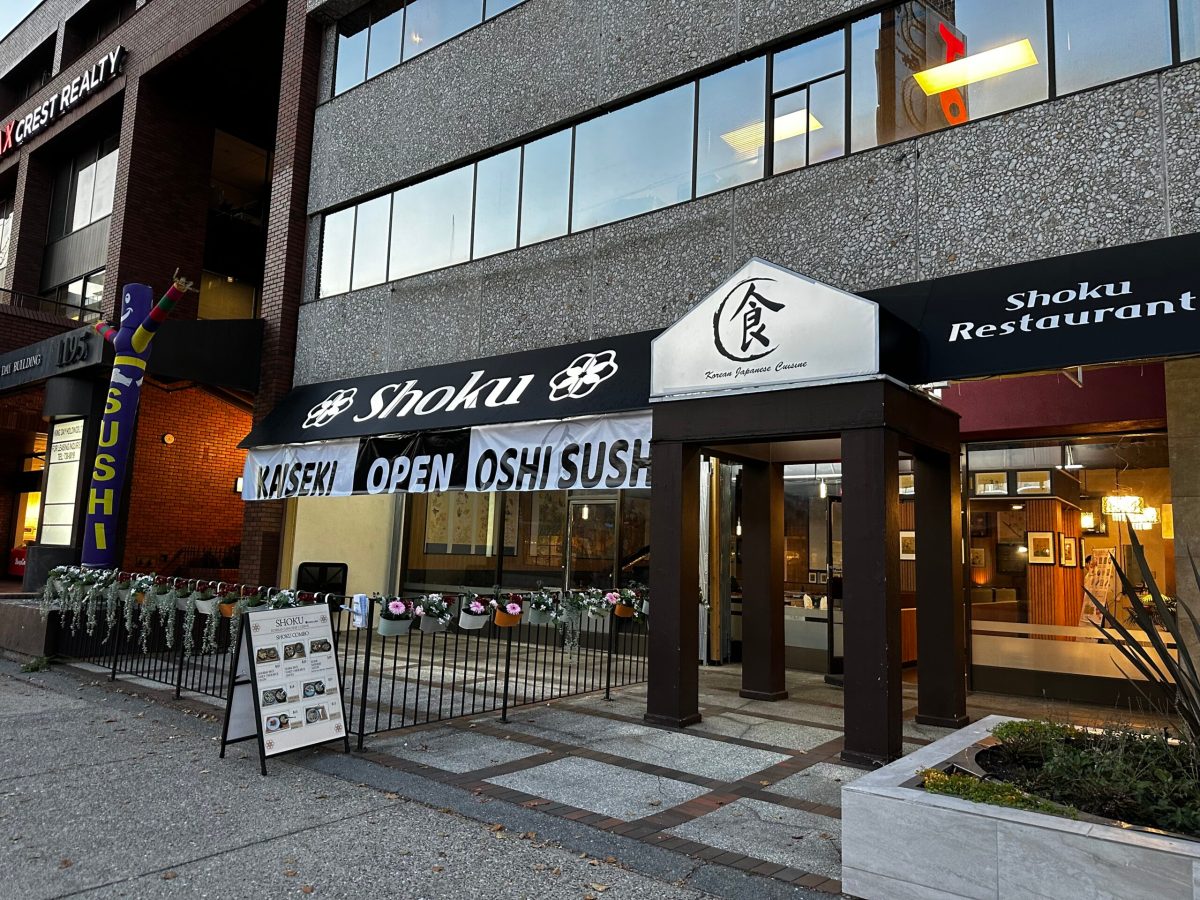
This is not Japanese cuisine, this is Japanese ingredients prepared with Korean methods, and what you get is more Korean. The techniques feel heavy-handed when compared to Japanese refinement. These were all fulsome plates course by course. Everything was rich, everything was dense, and everything felt like Korean in the mouth. Once again, thankfully, it was advertised outside, so that there is no miss or confusion. So once you have this in mind, you can go ahead and appreciate the food for what it is. Fusion Asian much like the Indian interpretation of Chinese cuisine, a popular sub-category all on its own.

The decor is just as confusing. At the time an inflatable tube man was flailing about outside, to attract the attention of those passing by on West Broadway. Just at the door sits a grand piano. Behind that, wall to wall of fine art that included paintings of nature and animals, plus showcases dedicated to faberge eggs. A unique look of refinement that didn’t really match with the food. Although, I would later learn that this is their second location, and their original is a similar restaurant with a similar theme and menu as Shoku. I would end up visiting that one as well (review of that to come).
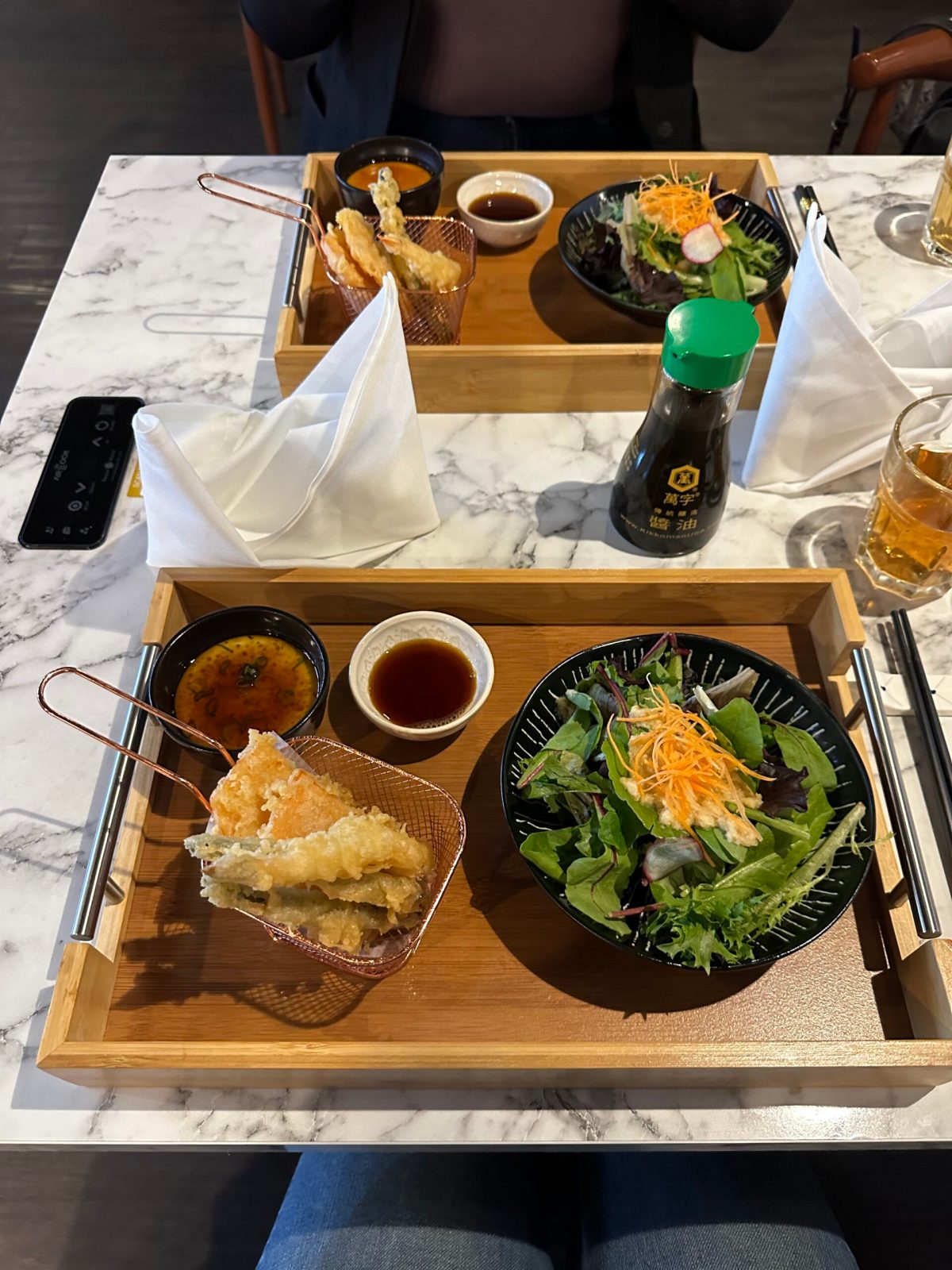
They call their menus “kaiseki”, meaning “a traditional multi-course Japanese dinner. The term also refers to the collection of skills and techniques that allow the preparation of such meals”, as taken from Wikipedia.
Each course was titled “step” and for all those who visit, you will get 30% all of the kaiseki until the end of the 2023 year.
Step 1 was three appetizers served on a tray. The order in which you eat them is as they are listed on the menu.

The Salad is a spring mix with apple dressing. Lightly sauced with majority of it at clumped together at the centre. Best to spread out and mix before eating. I would this a pretty standard start.

The Chawanmushi is steamed egg custard with ichiban sauce. Not like the traditional Japanese version as the menu states, but still a soothing and warm bite with a delicate texture and salty taste.

The Tempura is a collection that includes yam, green bean, and prawn with den dash. Crispy batter, but oily to the touch, and on the lips. And I did have issue with how shallow the bowl they used for the dip was. It made it impossible to properly coat your tempura in sauce, and without it the flavour fell flat.

Step 2 was the Sashimi course with salmon, hamachi, madai nigiri, bluefin, aburi ika, and jumbo prawn atemaki. As good as the quality of the raw seafood was. Served at room temperature, they did not feel like the freshest I have had, but still tasty with a little wasabi and soy.
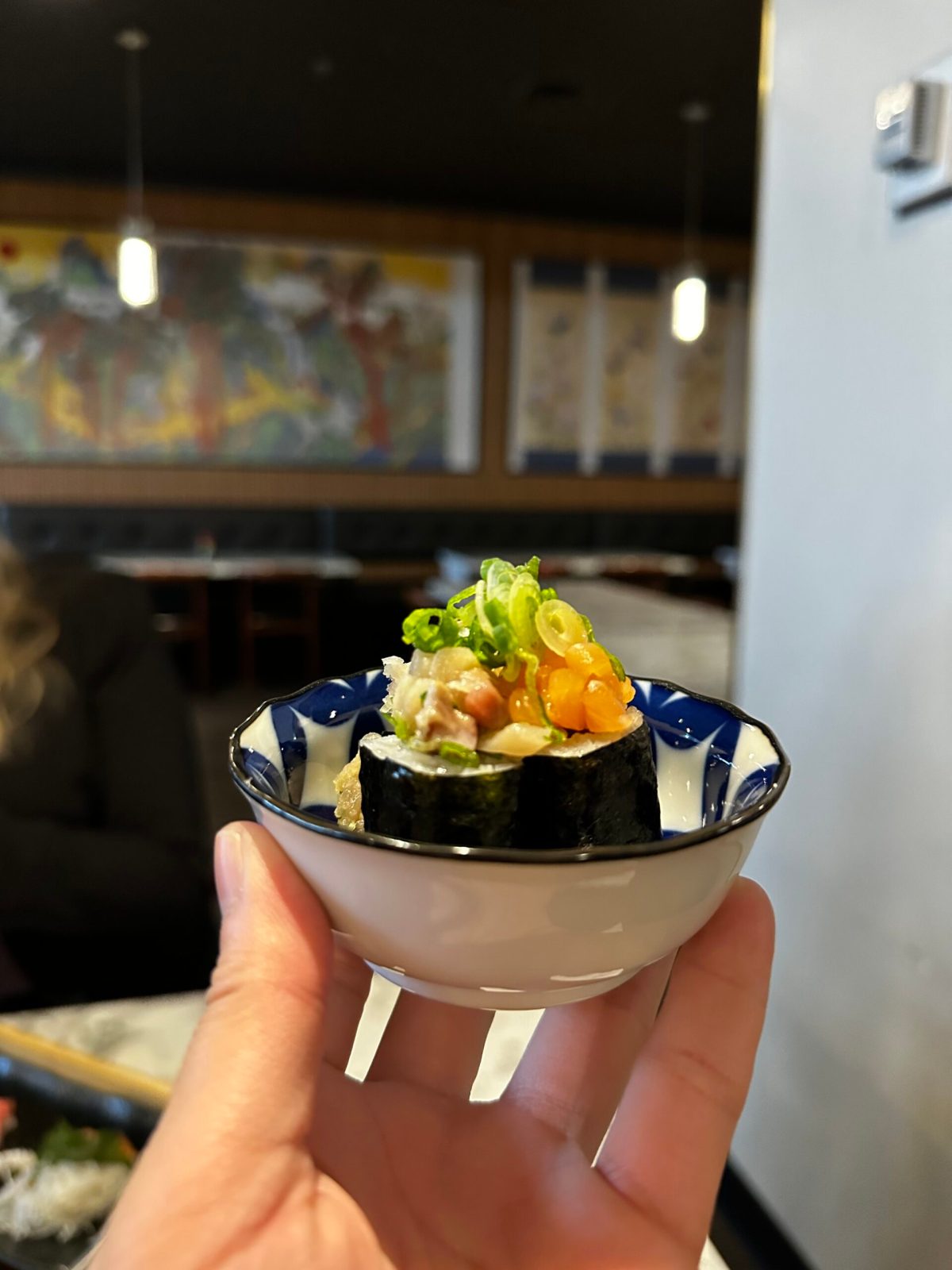
Three kinds of fish on top of Kanpyo Maki. Here, the three types of fish all blurred together, shadowed by the tangy and bold filling of the base roll. A unique taste sensation that I did like how easy it was to pop into my mouth.

The Miso soup was salty, one toned, and on the watery side. The fresh green onion within. helped. I would use the soup as a break, to help wash the palate in between bites.

Step 3 was the cooked BBQ meat and seafood course with hire katsu, garlic butter prawn, king oyster mushroom, grilled pork belly, grilled unagi, grilled scallop with assorted vegetables; all accompanied by six types of sides, sauces and seasonings. Seasoned green onion, pickled radish, onion, cabbage, grilled garlic, ssamjang sauce, and Katsu sauce.

This assembly read and ate more like Korean barbecue, but without the need to do any of the actual cooking table side, yourself.
With the leafy greens it was easiest to build a wrap of sorts with meat and sauce. Much like the popular combo of lettuce, pork belly, garlic, and ssamjang.
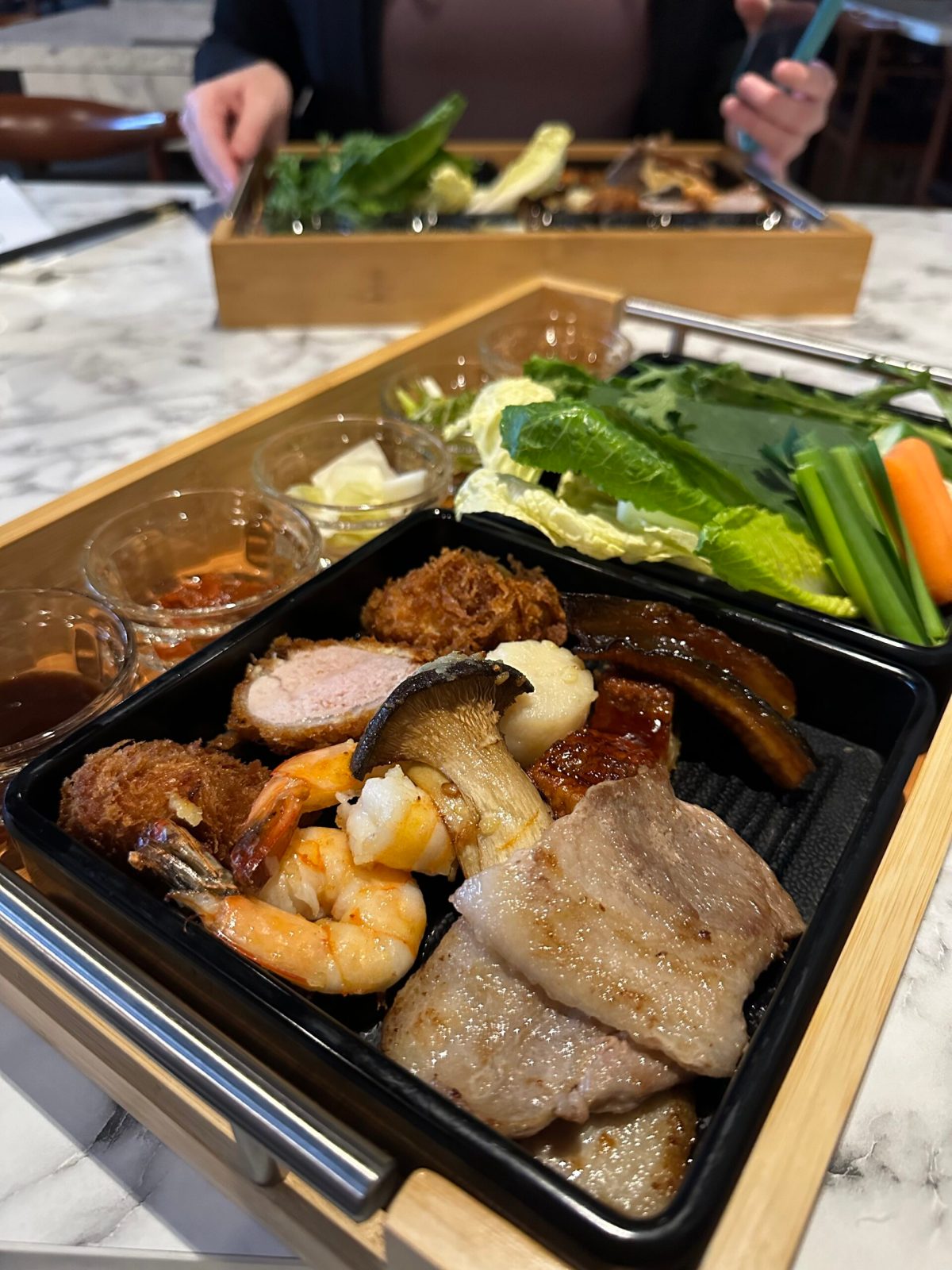
The other proteins were nice mix. A saucy Japanese style eel, juicy shrimp, and crispy breaded pork cutlet.

Step 4 was the noodle course. A small bowl of vegetable udon in a Ichiban dash broth. Pretty average, this felt like the Chinese style last course at a family feast, meant to ensure you leave the table full.

Step 5 was dessert. A simple scoop of vanilla ice cream topped with flower petals.
I did like the multiple courses and the showcasing of all the different types of food preparation that it laid out. However, it felt like it just tapered off for the last two Steps. There was so much care and thought put into the first 3, set on trays. Step 4 and 5 left like afterthoughts.
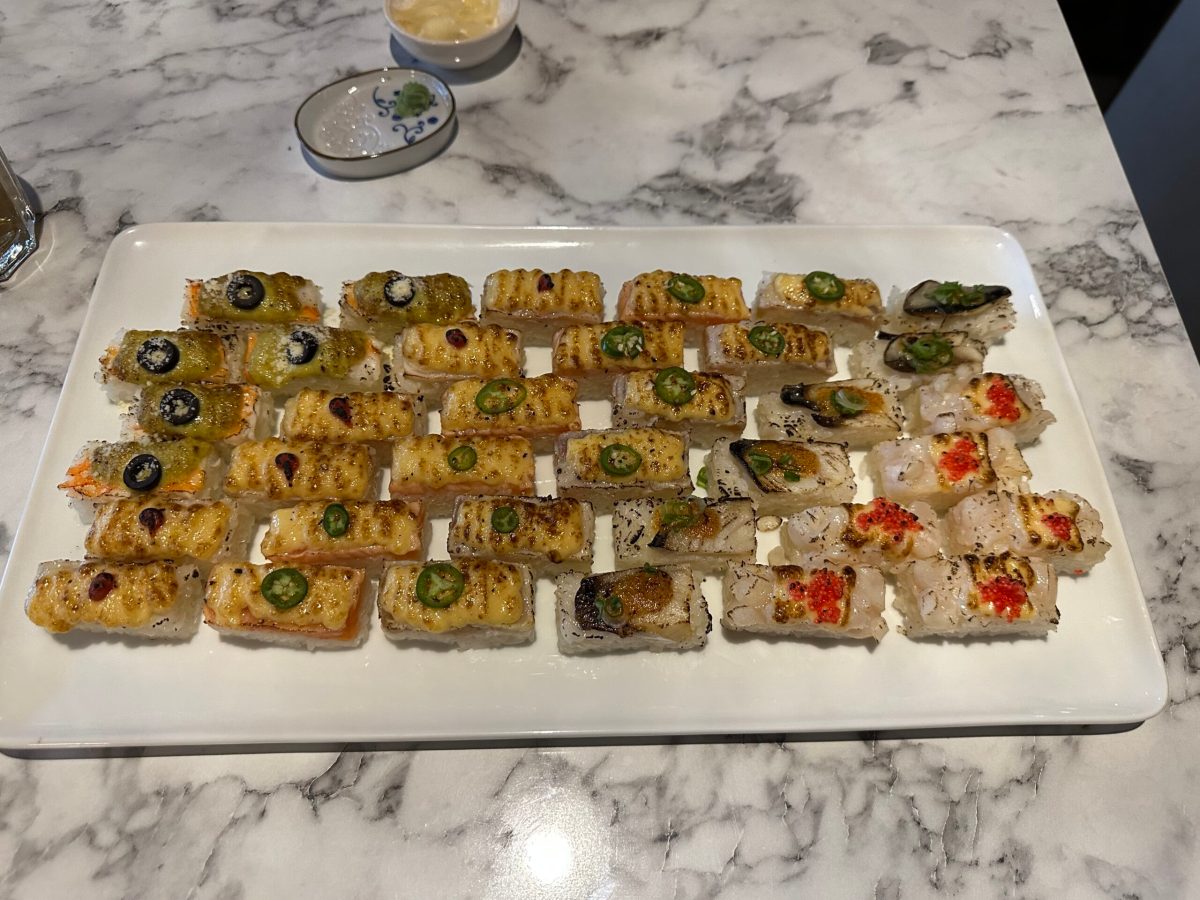
Not part of the kaiseki set menu, but worth exploring if you like unusual fusion sushi rolls is their Oshi. If you can’t choose which ones to try, order their platter with six of their most popular.
The Fat Tuna was Albacore tuna, Garlic mayo, and Sliced serrano. The fish was fatty as promised, you got a lot of the gristle melding together with the heavy mayo. The slice of jalapeño did help to curb someone this, but at the same time dominated the flavour profile. A little acidity from lemon would have been nice.
The Atlantic salmon oshi was a familiar one and probably the best out of the six. Atlantic salmon, Oshi sauce, Sliced serrano, and Ground black pepper. But sadly, much like with all the other oshi, the preparation of the rice wasn’t there and there was far to much sauce to appreciate any would be quality of the fish.

The Scallop oshi was Sliced scallop, Oshi sauce, and tobiko. It was oddly peppery, masking any of the scallop texture or flavour under it, along with the blanket of sauce.
The Tai was Izumi tai, Ume Oshi sauce, and Lemon zest. There was great texture to the fish, but its flavour was completely lost behind the torched topping, (as was the case for all the other oshi). For this you needed a dip into soy to break up the flavour with some acid.

The Ebi was unusual and didn’t really jibe with the other flavours on this platter, although having said that they do have a pizza oshi with salami and ragu that this would match with. Ebi, Basil, oshi sauce, Black olive, and Arugula. It felt more like toppings over pasta than sushi, especially with the dusting of Parmesan cheese. Not for me in this format, tasty if you substitute the rice for fettuccine.
Saba was extremely salty and I just couldn’t get past it to enjoy this one. Mackerel, Miso sauce, Green onion and Red chili powder. Maybe some lemon could have helped?

In closing, not what I expected coming in. Hard to review cause I couldn’t wrap my head are what looks like Japanese cuisine, but tastes nothing like the authentic stuff. Best to have a disclaimer on this one and “Korean Japanese food” title, doesn’t feel like enough. This all felt like it’s only thing.
Not light like Japanese cuisine should be, but heavy and full of impactful flavours like Korean cuisine. Yet not sweet and spicy enough to fit in the Korean box. This is the Korean interpretation of Japanese cuisine. Koreans making Japanese food with Korean practices, in Korean flavours? If you are expecting simplicity of Japanese fish over rice, you are not going to get it here with this food. The food is not to be paired with sake, but soju.
Shoku
1177 W Broadway, Vancouver, BC V6H 1G3
(604) 442-8543
shokuvancouver.ca





